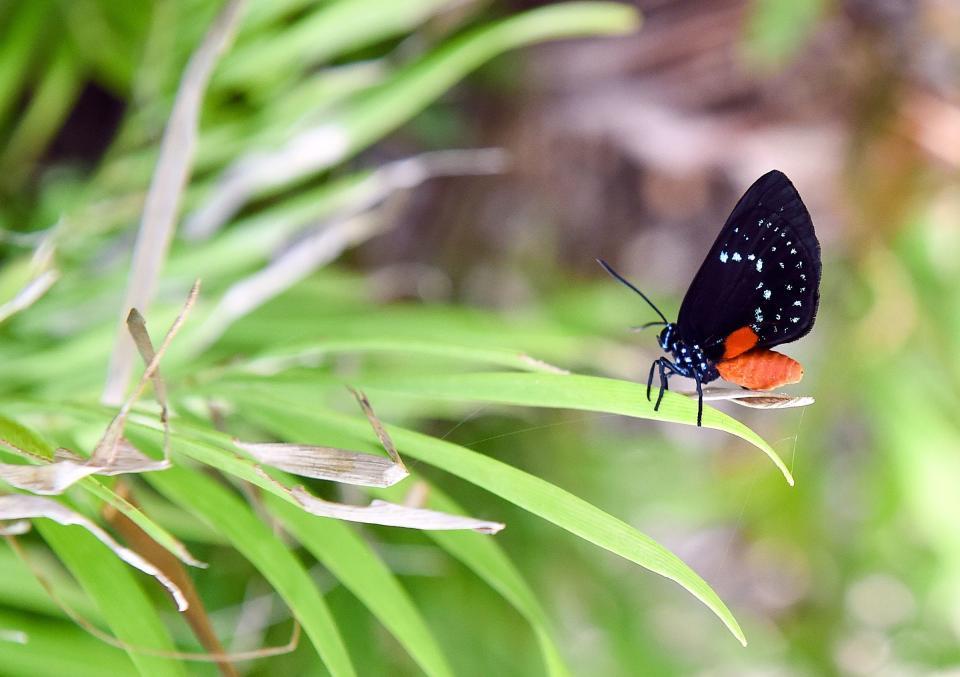What is a Florida-Friendly Landscape? Sally Scalera
The term Florida-Friendly Landscape has been around for 30 years, but there is still some confusion over what such a landscape would look like.
I would like to shed some light on why the Florida-Friendly Landscape program was created, the components of a Florida-friendly yard, and clues indicating when a yard is not Florida-friendly.
The Florida-Friendly Landscape program was created to help residents utilize low-maintenance plants along with environmentally sustainable practices to conserve and protect Florida’s water resources. Along with being attractive, a FFL saves time, energy and money, while protecting the environment and our natural resources. This program not only covers landscape design, but also explains how to properly install and maintain a healthy landscape. Attractive landscapes are a great way to add value to every community.
FFL consists of the following nine principles:
Right plant, right place
Water efficiently
Fertilize appropriately
Mulch
Attract wildlife
Manage yard pests responsibly
Recycle yard waste
Reduce storm water runoff
Protect the waterfront
There are some obvious signs when a landscape would not be considered a Florida-Friendly Landscape, such as the presence of untrimmed plants, tall weeds and bare ground. I periodically receive calls asking if an FFL yard would protect them from code enforcement, which would be answered with a no, since every yard requires some maintenance.
Florida gardening:Here's what to do in your Brevard yard and garden in February | Sally Scalera
Flowers for your Florida yard:These winter flowers can take the cold in Central Florida | Sally Scalera
If you are re-doing a section of your landscape or building a new home, a good design with proper plant selection will set you up for a successful outcome. The implementation of the first principle, right plant, right place, is where you can save yourself a lot of money and effort.
First, observe the planting location and note the light conditions where the plants will be growing, especially how the light conditions change with the seasons. In addition to the light conditions, it is important to record the mature height and spread of each plant you are thinking of adding to your landscape. Note if there is a building or fence present, windows to take into consideration and powerlines overhead.

If you have a bay window, why not choose a shrub or herbaceous perennial that has a mature height that will remain below the bottom of the window? After all, choosing a plant that won’t require pruning will save you time and effort that can be used doing something else.
It is easy to find information about a plant’s height, spread, light conditions, soil pH, soil moisture and salt spray tolerances by checking out our FFL Plant Guide at ffl.ifas.ufl.edu/plants. This website has a searchable database, so you can look for plants based on type, shape, flower color, light conditions or Florida native status, which is a list of 139 native plants for your zip code.
Another option is to do an internet search of the plant’s name (a scientific name is much better to use than a common name) in the search bar, followed by ifas. For example, to find information on goldenrod, type in goldenrod ifas (or Solidago ifas). The results page could have a bulletin written by one of our specialists from the University of Florida, information from our Solutions for Your Life website, or information from one of our county Extension offices.
When designing an area, use the mature spread of the plant for spacing purposes so that there is ample room for the young plants to grow and fill in the area.
Since we are on the topic of Florida-Friendly Landscaping, there is a free FFL seminar scheduled for Saturday, March 25, at the Eau Gallie Convention Center. To discover the presentations scheduled and to register for this seminar, go to fflseminar2023.eventbrite.com.
Also, beginning in April, there will be an eight-week FFL class series for anyone who wants to learn it all. For the class schedule and to see what topics will be covered, go to 2023fflclassseries.eventbrite.com.
Our Florida-Friendly Landscaping Program office at the University of Florida has just launched the Florida-Friendly Pledge in conjunction with the yearlong 30th-anniversary celebration. This pledge can be taken by homeowner, those who maintain community landscape (HOAs, condo associations, etc.) and landscape professionals who support FFL, providing recognition and a chance to get on the map.
Go to ffl.ifas.ufl.edu/about-ffl/ffl-30th-anniversary. Scroll down the page, and click on the link for the Florida-Friendly Landscaping pledge. On this page is a dashboard that shows the number of pledges in each county. There is also a map of the state showing the pledges. No personal information, including addresses, is made public.
To complete the pledge, provide your name, address and email address. For everyone who makes the pledge, a follow-up survey will be sent to gauge your progress on upholding the pledge.
This weekend is a great time to check out the Florida-Friendly Landscaping website and decide what practices you will adopt, sign up to take the pledge and help Florida’s environment, beginning in your own yard.
As I started writing this article, I checked the FFL Pledge dashboard and discovered that only 33 counties out of 67 (49%) have at least one pledge. I have signed up to take the pledge, so please join me, and let’s see if we can get Brevard County on the pie chart, as a nice big slice.
Sally Scalera is an urban horticulture agent and master gardener coordinator for the University of Florida’s Institute of Food and Agriculture Sciences. Email her at sasc@ufl.edu.
This article originally appeared on Florida Today: Take the pledge to adopt Florida-Friendly Landscape practices

